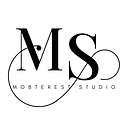Uncle Bob’s Clean Architecture
In the world of software development, creating maintainable and scalable applications is a constant challenge. As projects grow in complexity, it becomes increasingly important to have a solid architectural foundation that can withstand changes and allow for easy maintenance. This is where Uncle Bob’s Clean Architecture comes into play.
Uncle Bob, also known as Robert C. Martin, is a renowned software engineer and author who has made significant contributions to the field. His Clean Architecture is a software design philosophy that emphasizes separation of concerns and the dependency rule, with the ultimate goal of creating software that is independent of frameworks, databases, or UI technologies.
At its core, Clean Architecture advocates for the separation of business logic from implementation details. It provides a clear structure for organizing code into layers, each with distinct responsibilities. The architecture consists of the following layers:
- Entities: This layer represents the business entities or objects that encapsulate the core business logic of the application. Entities are agnostic to the details of the framework or technology being used and are solely concerned with the business rules. Here is an example in a flutter application:
class Task {
final String title;
final String description;
final DateTime dueDate;
Task({required this.title, required this.description, required this.dueDate});
}2. Use Cases: Also known as Interactors or Application Logic, this layer contains the application-specific business rules and represents the use cases or operations that the system supports. Use cases orchestrate the flow of data between the entities and external systems. Here is an example in a flutter application:
class CreateTaskUseCase {
final TaskRepository _repository;
CreateTaskUseCase(this._repository);
Future<void> execute(Task task) async {
// Perform any necessary validation or business logic here
await _repository.createTask(task);
}
}3. Interfaces: This layer defines the interfaces through which the different layers communicate. It encapsulates the inputs and outputs of the system and acts as a boundary between the inner layers and the external world. Interfaces can include web APIs, database gateways, or any other means of communication. Here is an example in a flutter application:
abstract class TaskRepository {
Future<void> createTask(Task task);
}4. Frameworks and Drivers: This layer contains the implementation details and external dependencies of the system, such as the user interface, database, web framework, or external services. In a Flutter application, this layer includes the user interface components, database access, and other external services. Example:
class TaskRepositoryImpl implements TaskRepository {
final Database _database;
TaskRepositoryImpl(this._database);
@override
Future<void> createTask(Task task) async {
// Perform database operations using _database
// For example, save the task to a SQLite database
await _database.insert('tasks', task.toMap());
}
}The key principle of Clean Architecture is the dependency rule, which states that the dependencies between the layers should always point inward. In other words, the inner layers should have no knowledge of the outer layers. This ensures that changes in the outer layers do not affect the inner layers, making the codebase more modular and maintainable. The dependency rule is achieved through the use of interfaces, where the outer layers define interfaces that the inner layers depend on.
One of the significant benefits of Clean Architecture is its testability. By isolating the business logic in the inner layers, the core functionality of the application can be thoroughly tested without the need for external dependencies or complex setup. This promotes the use of automated unit tests, which can greatly improve the stability and quality of the codebase.
Another advantage of Clean Architecture is its flexibility to adapt and evolve over time. As technology and requirements change, the inner layers can remain untouched, while the outer layers can be replaced or upgraded. This allows for future-proofing the application and mitigating the risks associated with technological advancements or business changes.
While Clean Architecture provides a clear and organized structure for building software, it is important to note that it is not a one-size-fits-all solution. The architecture should be adapted and tailored to the specific needs and complexity of the project.
In conclusion, Uncle Bob’s Clean Architecture is a powerful paradigm for building maintainable and scalable software. By following this structure, you achieve the separation of concerns and ensure that the inner layers (entities and use cases) are decoupled from the outer layers (interfaces and frameworks/drivers). This separation enhances the testability, maintainability, and flexibility.
